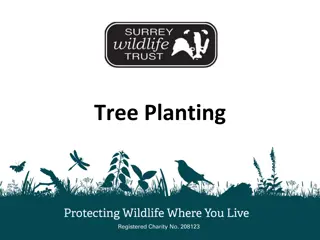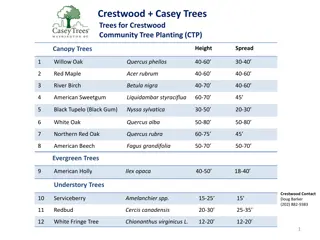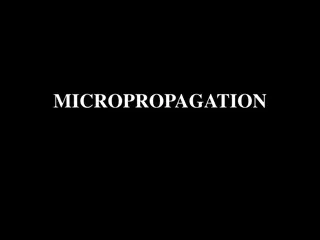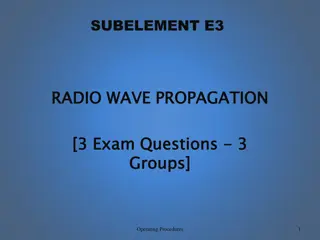Plant Propagation Techniques and Tree Planting Guide
Learn various plant propagation methods such as division, bulbs and corms, tubers and rhizomes, along with essential tips for planting and care. Understand the processes of asexual propagation and division with detailed steps for successful plant propagation and growth. Discover how to propagate plants through bulbs, corms, tubers, and rhizomes, ensuring proper care for healthy plant development.
Download Presentation

Please find below an Image/Link to download the presentation.
The content on the website is provided AS IS for your information and personal use only. It may not be sold, licensed, or shared on other websites without obtaining consent from the author. Download presentation by click this link. If you encounter any issues during the download, it is possible that the publisher has removed the file from their server.
E N D
Presentation Transcript
Plant Propagation by Plant Division & Planting A Tree Frank Cruz Horticulturist
Asexual Propagation Does not involve the exchange of genetic material Genetically identical to the parent Asexual propagation includes: - Cuttings, layering, division, grafting, budding, & tissue culture - Today propagating by Division
Division Is the process of dividing a number of plants that are growing in clusters or multiples - Each piece needs to have a bud and roots Dig the plant carefully, loosen the roots & lift the plant out of the ground Bananas and taro are common examples We will be doing lemon grass.
Bulbs and Corms Bulbs (onion)and corms (banana, taro) can be propagated by removing the suckers that form at the base of the parent plant It can take up to 1 to 2 years for plants to flower.
Tubers & Rhizomes Tubers of tuberous plants can be dug up & separated(potato) Each needs to have a segment of the crown that contains at least one eye Rhizomes grow (underground) and develop buds along their length Gingers have rhizomes It can be dug & cut into sections that each contain at least one eye
Planting & Care Minimum: Dig a hole the same depth as the root ball if no organic matter is added. But of course you want to improve the soil below and around the root ball You want the crown (point where root & stem meet) level with the ground surface Do not mound soil or mulch up against the stems
Planting & Care Best: Dig a hole with sloping slides deeper than the root ball & mix a layer of compost (or other organic matter) with soil below the root ball Break up any of the roots that are circling the root ball pot bound roots Make sure tap root is straight, no J roots It s better to plant a $1 plant in a $10 hole than it is to plant $10 plant in a $1 hole























